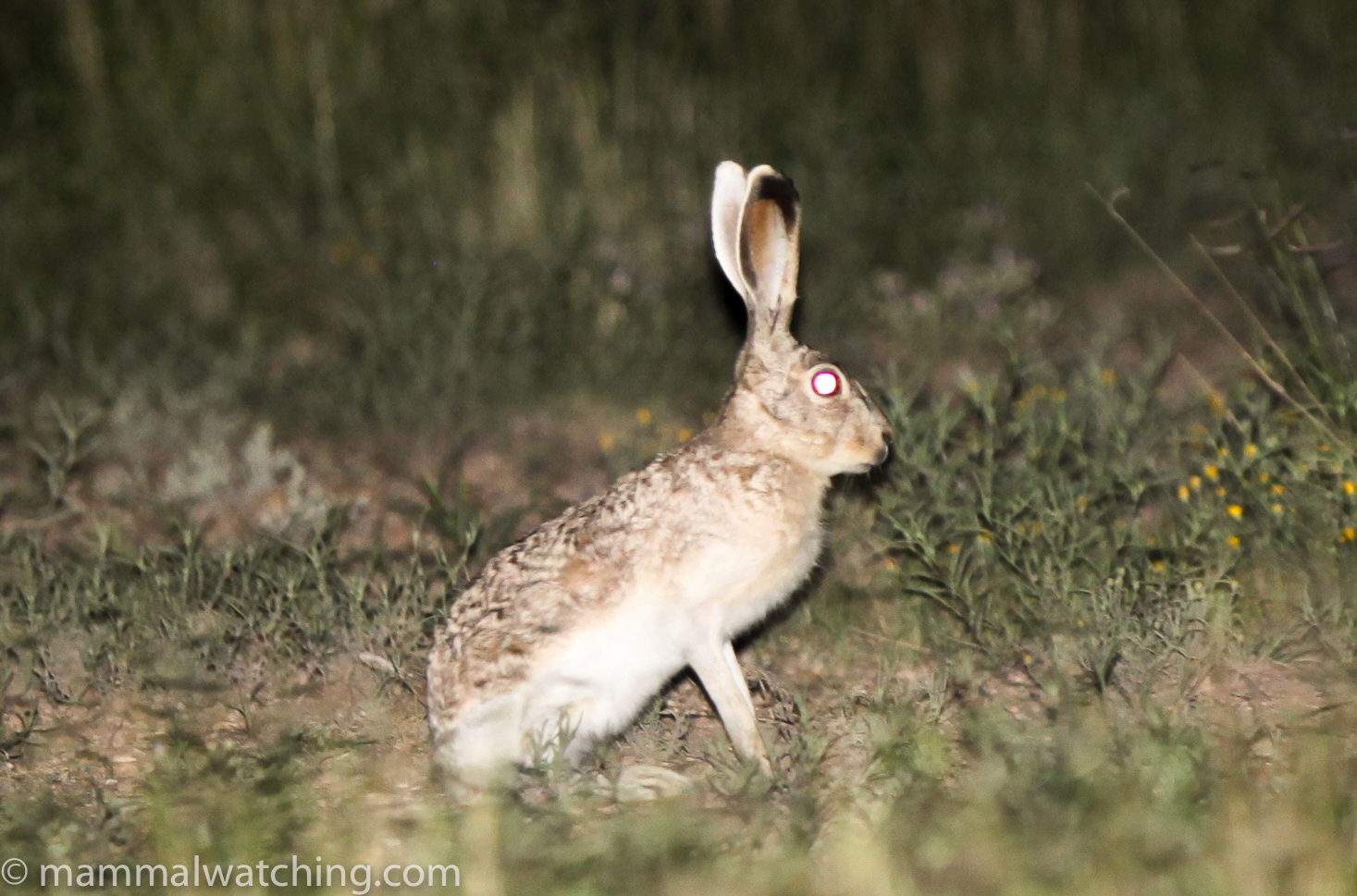
New Mexico
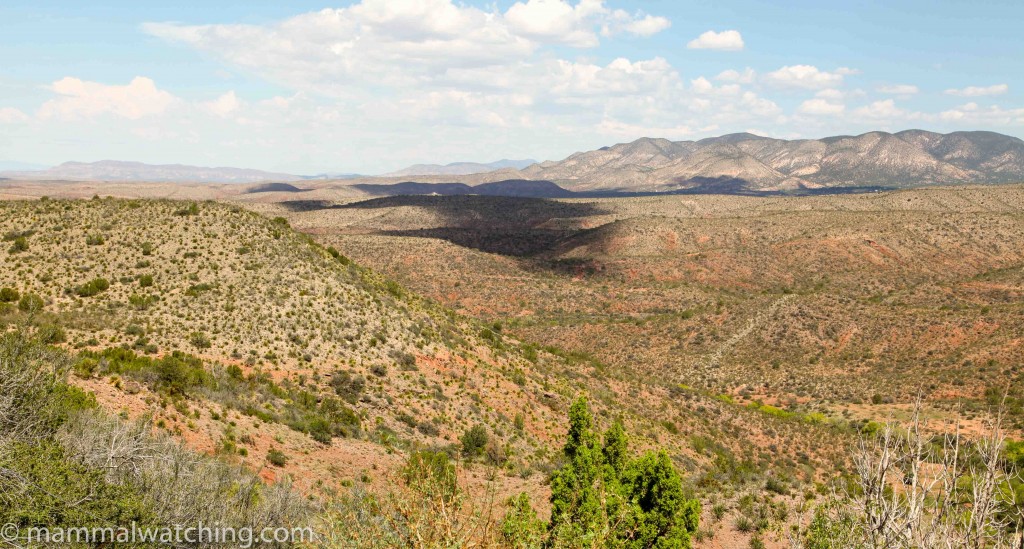
Central New Mexico
New Mexico is beautiful, no doubt about it. The state has a stack of diverse wilderness, lots of wildlife and simply looking at some of the mountain forest makes you feel healthier. I first visited in September 1998, and returned for a few hours (just crossing the border for a night from Arizona) in September 2012. I was back for a few days in September 2013 and for a night near Carlsbad Caverns in May 2018. And I spent a night in 2022 near the town of Reserve just over the border from Arizona.
Albuquerque Area
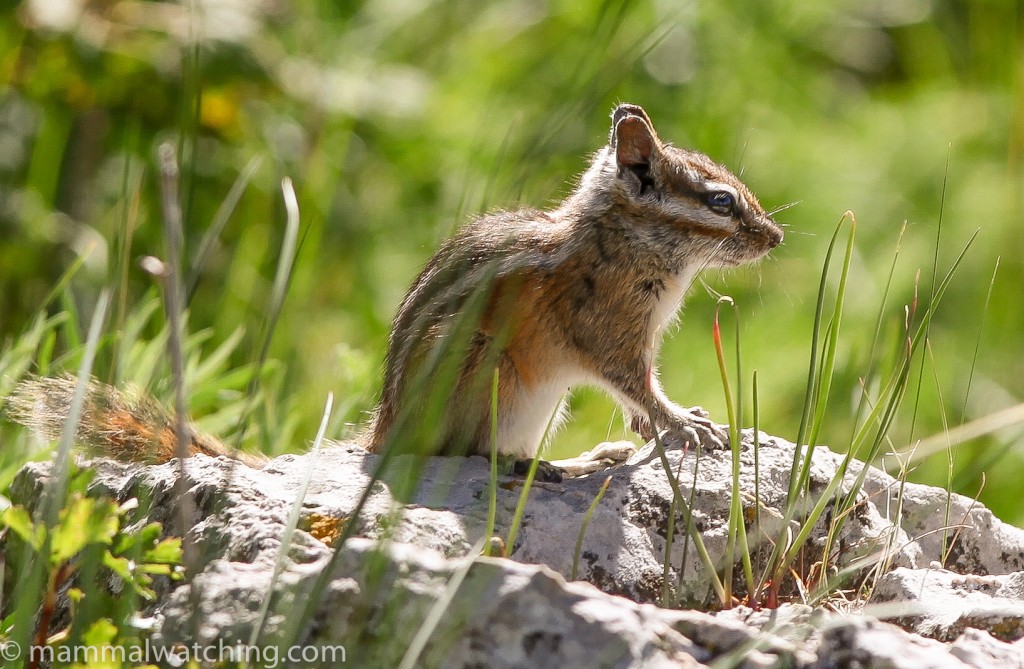
Colorado Chipmunk, Neotamias quadrivittatus
In September 2013, Sandia Crest, just to the east of town, has impressive views and impressive numbers of Colorado Chipmunks too more importantly. I saw a couple in the late morning along the trails to the view point from the carpark at the summit and another under the balcony of the coffee shop there. A cable car runs up the mountain too and I suspect they are even easier to see at the end of the line. Least Chipmunks were also common and there were some Mule Deer on the road. Cottontails here might well be Manzano Cottontails. I didn’t see any but didn’t expect to in the middle of the day.
The Manzano Mountains, an hour south of Albuquerque, were wonderful in early September and I’d love to camp there. I spent a couple of hours at dawn looking for the little known (or little studied) Manzano Mountains Cottontail. The type locality is from 2,900 metres on the north east slope of Bosque Peak. I drove to the 4th of July Campground (from Tajique) along the Tajique Torreon loop road but didn’t see any cottontails. But I did see a Rock Squirrel, Mule Deer and Elk.
At the township of Manzano – at about 7000 feet – I saw three cottontails along the road, at the edge of the forest, early in the morning. If the IUCN range maps are to be believed, these must have been Manzano Mountains Cottontails (no other cottontail is in range at this elevation). I’m ticking them! Driving up into the forest from Manzano I saw a beautiful Abert’s Squirrel, White-tailed Deer and several Elk.
Carlsbad Caverns & City
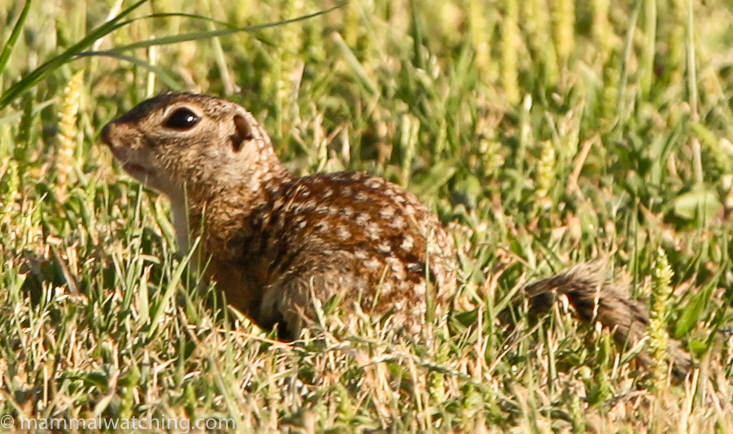
Rio Grande Ground Squirrel, Ictidomys parvidens
Rio Grande (formerly Mexican) Ground Squirrels are easy to see in Carsbad City, at least from May to mid September before they hibernate. There is supposed to be a colony in the city park that flanks the river in the centre of town, though I saw several easily on the grass of the Martin Luther King Jr park, along East Plaza street (east of South Canyon Street) at 7.30 a.m. in early September 2013. (True Mexican Ground Squirrels are now found only in central Mexico).
In 1998 I saw Mexican Free-tailed Bats and a probable White-footed Deer Mouse here during the evening bat emergence at Carlsbad National Park. I also saw a couple of Ringtails while spotlighting outside the park together with a skunk, although I cannot remember whether it was a Hooded or Striped Skunk.
In 2013 I spotlit up and down the park entrance road slowly from 22.00 to 00.30 and saw 5 separate Ringtails, a few Kangaroo Rats (at least one of which was Banner-tailed I think), several tiny Silky Pocket Mice on the road, at least one Hispid Pocket Mouse, Mule Deer and a Striped Skunk. I think the road is likely a good spot to see Hog-nosed Skunks, my main goal that evening, though I didn’t see any.
In May 2018 I spent a couple of hours spotlighting around White’s City and Carlsbad Caverns. There were Pronghorns, Black-tailed Jackrabbits, Desert Cottontails and a Kit Fox in the desert. And I finally saw a Hog-nosed Skunk along the park entrance road (and then got a ticket from the ranger for the privilege).
Hidalgo County (extreme south west New Mexico)
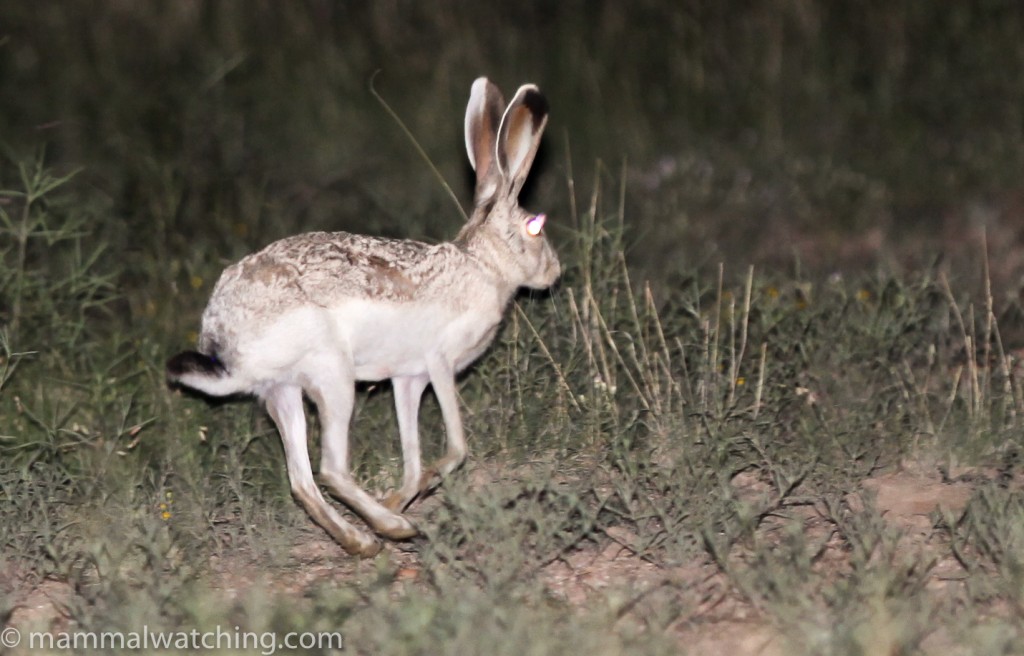
White-sided Jackrabbit, Lepus callotis
Hidalgo County is the only place in the USA you can see White-sided Jackrabbits. Following Curtis Hart’s advice, I took a trip down Cloverdale Road (road 338) due south of Animas after dark in September 2012. Despite the very bright full moon there was a good deal of rodent activity on the road with several Pocket Mice and Merriam’s Kangaroo Rats. I identified the latter on the basis of habitat: Merriam’s are the common small kangaroo rat out on the gravel, Ord’s are in the sandier soil. Curtis has also seen White-throated Woodrats, Banner-tailed Kangaroo Rats and Hooded Skunks during a couple of drives on moonless nights, and Spotted Ground Squirrels during the day.
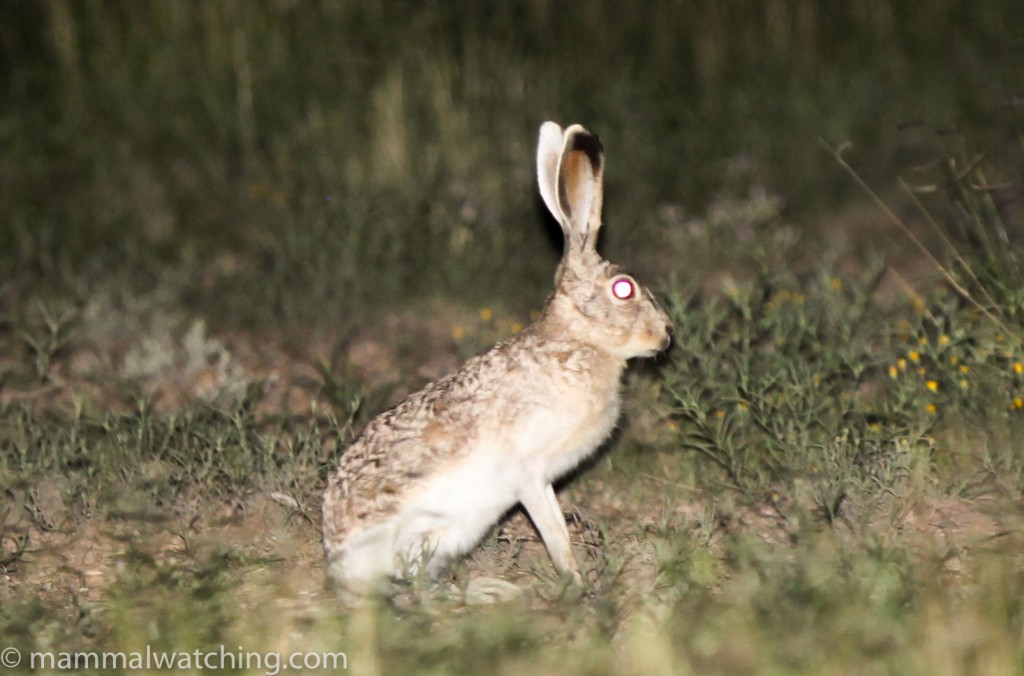
White-sided Jackrabbit, Lepus callotis
White-sided Jackrabbits are most active on moonlit nights and I saw two pairs about 36 miles south of Animas, in the same area that Curtis had seen them, when he saw 11 during one full moon evening between miles 34 and 40. This section of the road goes through a ranch where the vegetation was in much better shape than the scrubby country further north which was home to many Black-tailed Jackrabbits. The White-sided have a much whiter belly and flanks. And while Black-tailed Jackrabbits have black-tipped ears. the White-sided always has the outside of its ears tipped with white, even if the inside are black (see the photo above). The road is also very close to the Mexican border and though I wasn’t stopped I was waiting for the US border patrol to pull me over. So pack a passport and read my 2012 report.
Las Cruces
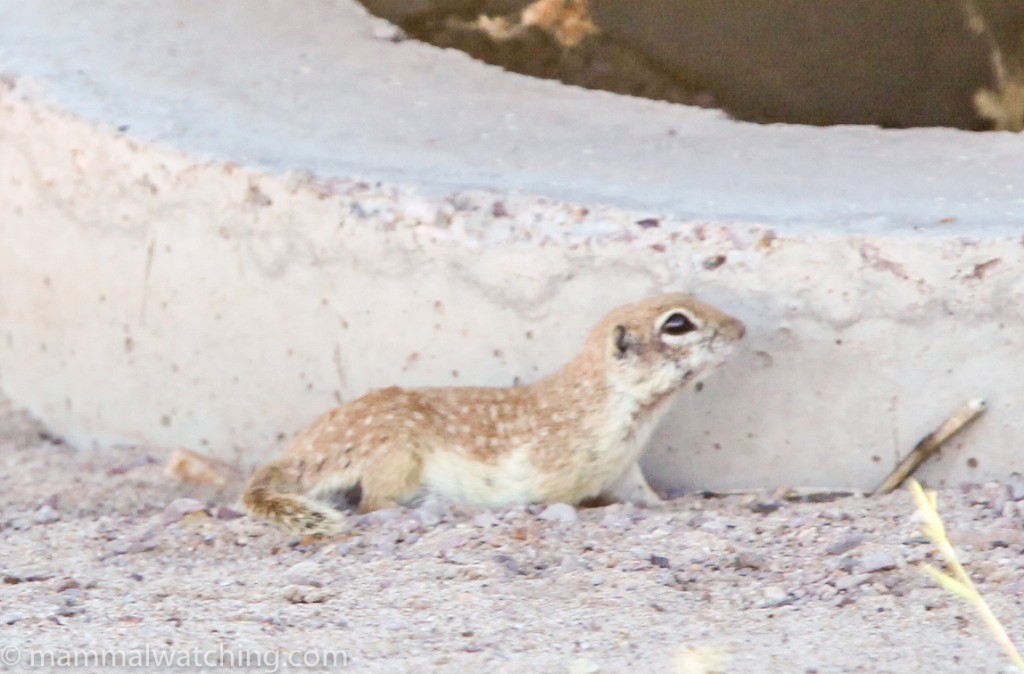
Spotted Ground Squirrel, Xerospermophilus spilosoma
Coke Smith had found a colony of Mexican Ground Squirrels on the campus of UNM at Las Cruces. In September 2013 I looked around the area he recommended in the mid afternoon (the desert scrub around the junction of Arrowsheads Drive and Wells Street) and found several ground squirrelish burrows but no animals. At about 5 p.m. I spotted my first ground squirrel which I eventually realised was in fact a Spotted Ground Squirrel (a lifer for me). I couldn’t find any Mexican Ground Squirrels but suspect the early morning might be a better time to look for them. My Spotted Ground Squirrel was denning in an old concrete storm drain cover (or something like that) along the dirt track that runs through the patch of scrub bordered by Wells Street to the north, and Arrowshead Drive to the east. There were Black-tailed Jackrabbits here too.
White Sands National Monument is just east of Las Cruces. I visited in September 1998 and was lucky enough to see a Kit Fox. We caught it in the headlights at dusk out in the middle of the dunes, just as the ranger was rounding up the cars to leave the park at closing time.
Reserve
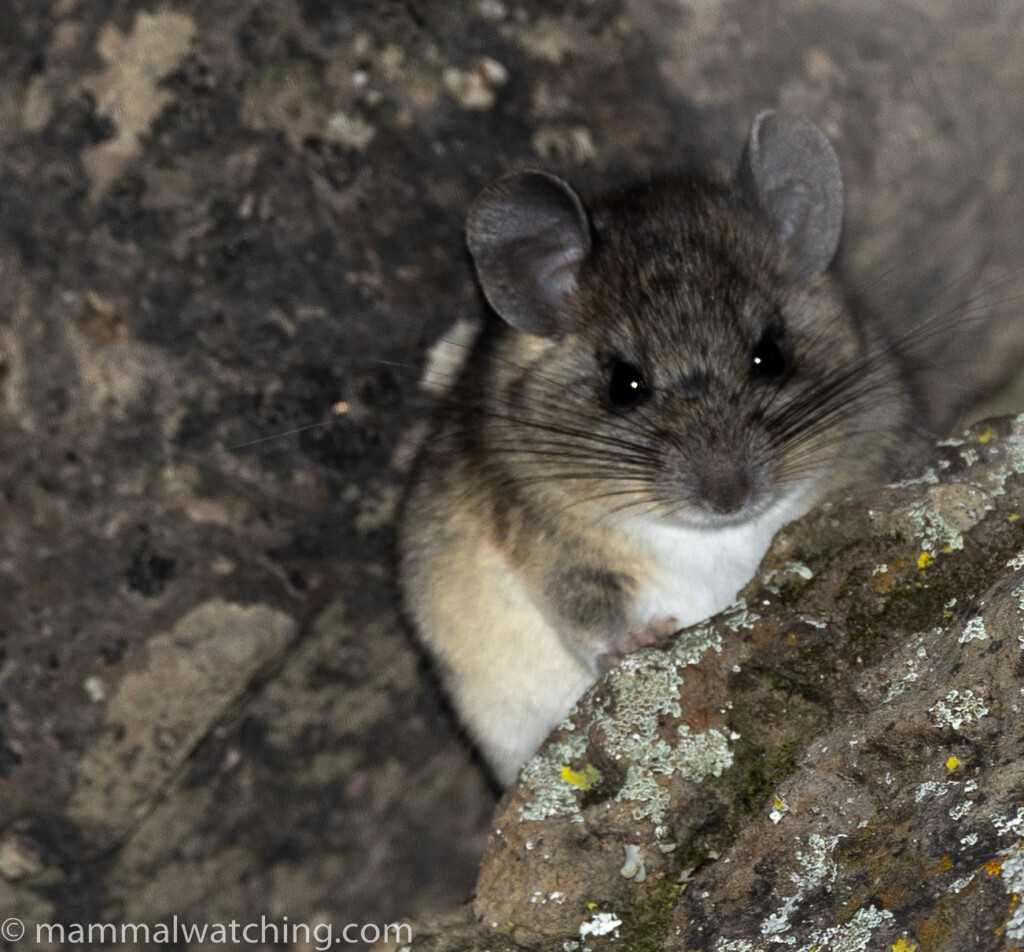
Probably Stephen’s Woodrat, Neotoma stephensi
One night in 2022 in an area known to contain Stephen’s Woodrats, produced one probable Stephen’s Woodrat, a Brush Mouse, Elk, Mountain Cottontails and an Abert’s Squirrel.
Sunspot
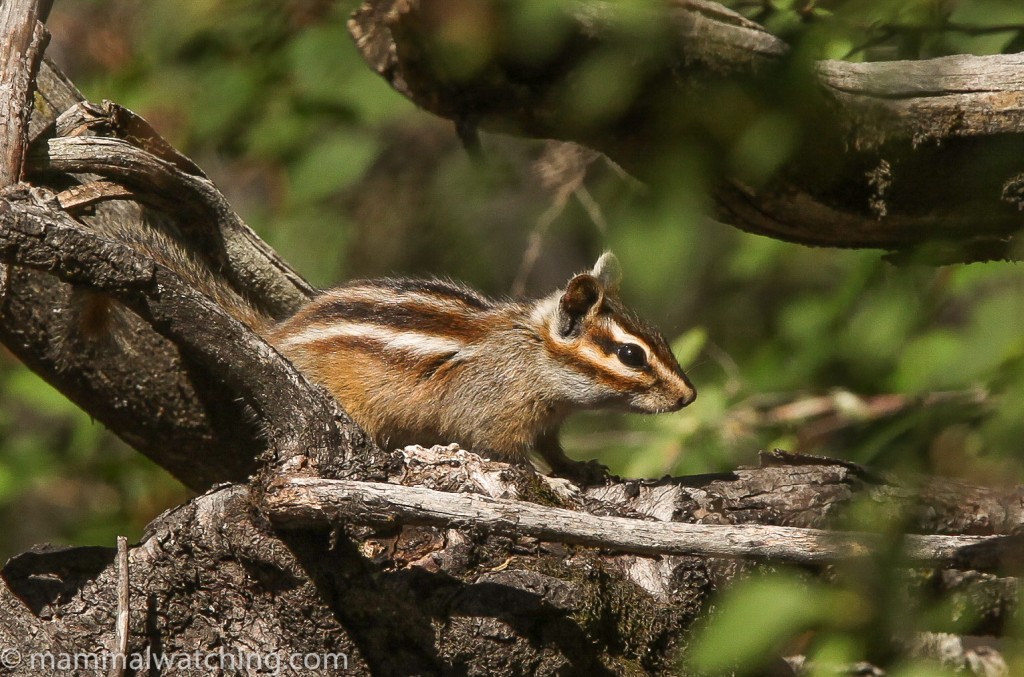
Grey-footed Chipmunk, Tamias canipes
Coke Smith put me onto Sunspot, about 15 miles from – and above – Cloudcroft. Coke said that Grey-footed Chipmunks were everywhere and, sure enough, as soon as I set foot in the forest in September 2013 I saw one. I was at the start of the 50 metre trail to the Cathey Canyon Vista, about 12 miles up the road from Cloudcroft. This species responded well to my squeaking.
Community Reports
The Chiricahuas, 2023: Venkat Sankar, 4 days & 53(!) species including Puma, White-sided Jackrabbit, Banner-tailed Kangaroo Rat, Chihuahuan Grasshopper Mouse, Allen’s Big-eared Bat, White-backed Hog-nosed Skunk and Ringtail.
Valles Caldera National Preserve, 2022: Bud Lensing, 1 day & 9 species including Abert’s Squirrel, Badger and a Short-tailed Weasel.
Springerville AZ and Reserve NM, 2022: Jon Hall, 2 days & 14 species including Mexican and a probable Stephen’s Woodrat, Banner-tailed Kangaroo Rats and Silky Pocket Mice.
Manzano Mountain Cottontails, 2021: Brian Keelan’s helpful guide to finding the Manzano Mountain Cottontail.
Hog-nosed Skunking, 2018: Jon Hall, 2 nights & 6 species including a Hog-nosed Skunk and a Kit Fox.
Arizona and New Mexico (plus California and Texas), 2018: Dominique Brugiere, 1 month and many mammals including Ringtail, Hog-nosed and Western Spotted Skunks, White-sided Jackrabbit and a Badger.
Western Rodents, 2015: John and Karen Shrader, 10 days & 35 species including Apache Pocket Mouse, Banner-tailed Kangaroo Rat, Plains Harvest Mouse and Spotted Ground Squirrel.
Western USA, 2017: Romain Bocquier, 40 days & 84 species including Hooded Skunk, Fisher and Banner-tailed Kangaroo Rat.
South East California to West Texas, 2015: Brian Keelan, 24 days & 43 mammals, 24 of which were bats (the main focus of the trip) including Ghost-faced, Lesser Long-nosed, Allen’s Big-eared (Lappet-browed) and Underwood’s Mastiff Bats, Davis Mountain Cottontail and Mexican Fox Sqiurrel. Great stuff!
Arizona and New Mexico, 2013: Jon Hall, 4 days & 29 species including Ringtail, Manzano Mountains Cottontail, Rio Grande and Spotted Ground Squirrels.
Arizona, New Mexico & Nevada, 2013: Richard Webb, 10 days & 40 species including Ringtail, Badger, Black-footed Ferret, Desert Pocket Gopher and Bushy-tailed Woodrat.
Arizona and New Mexico, 2013: Paul Carter, 24 days & 29 species including Hooded Skunk, Kit Fox and White-nosed Coatis.
South East Arizona and a bit of New Mexico, 2012: Jon Hall, 2.5 days & about 20 species including White-Sided and Antelope Jack Rabbits, Yellow-nosed Cotton Rats and Grey Collared Chipmunks.
Swift Foxes of the Kiowa Grasslands, 2012: Steve Morgan, 4 days & 13 species including Swift Foxes.
The Southwest, 2012: Vladimir Dinets, 1 month through N.W. New Mexico, N. Arizona, S.E. Utah and Colorado with selected highlights (mainly interesting rodents and bats).
New Mexico/Arizona, 2010: some notes from John Fox on Antelope Jackrabbits and Banner-tailed Kangaroo Rats.
New Mexico – Bosque Del Apache Area, 2010: Alan Dahl, 2 days and the mammals included a Bobcat.
Arizona & New Mexico, 2008: Gina Sheridan’s account of a herp trip featuring a lot of interesting small mammals including Pygmy Mouse, Banner-tailed Kangaroo Rat, Mogollon Vole, Plains Harvest Mouse plus Bailey’s, Arizona, Silky and Plains Pocket Mice.
Also See
SE Arizona & SW New Mexico: RFI (August 2012)
Western US – Swift Fox NM, Black Footed Ferret AZ, Ruby Mtns, NV (June 2012).


Leave a Reply
You must be logged in to post a comment.